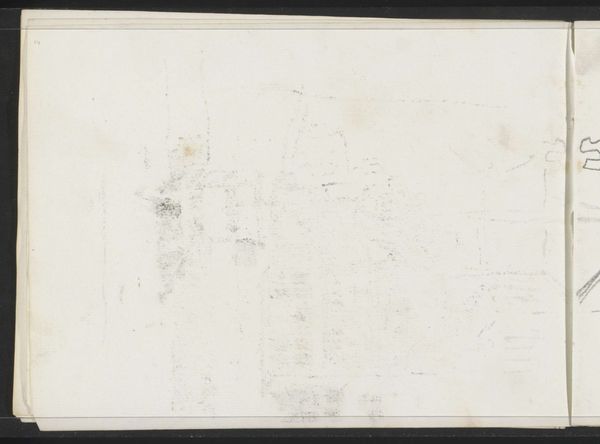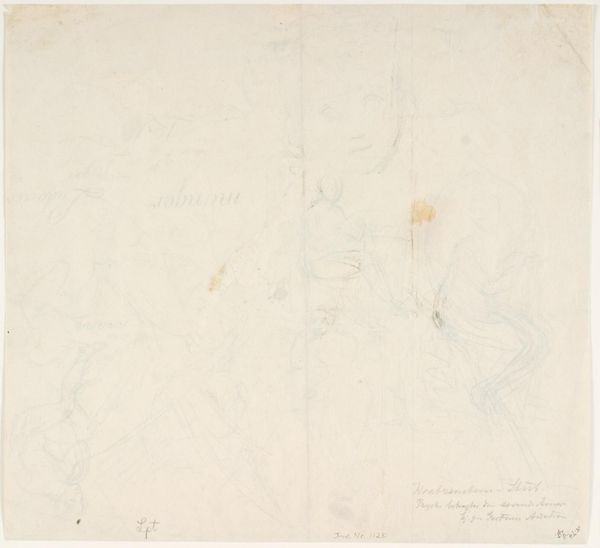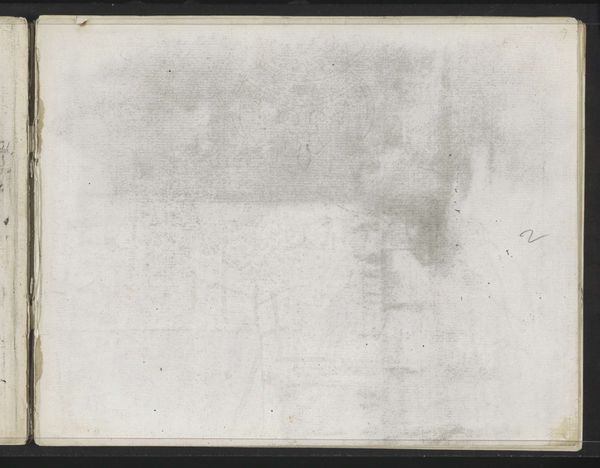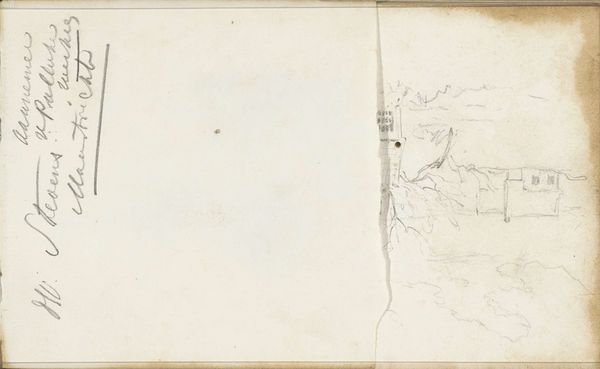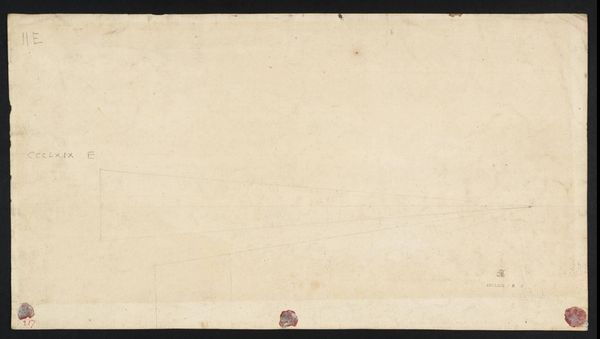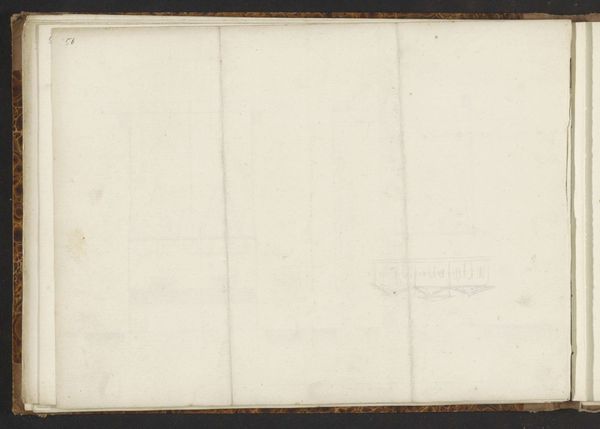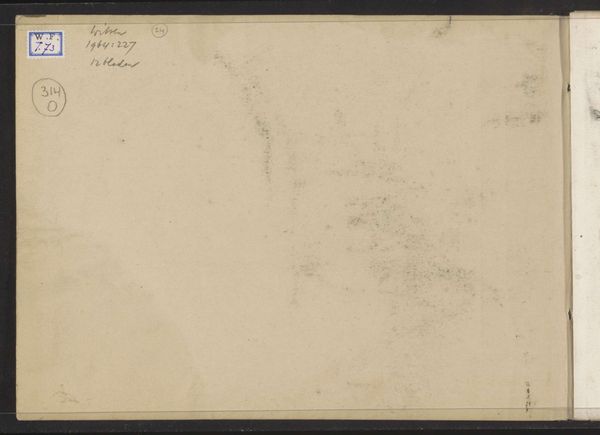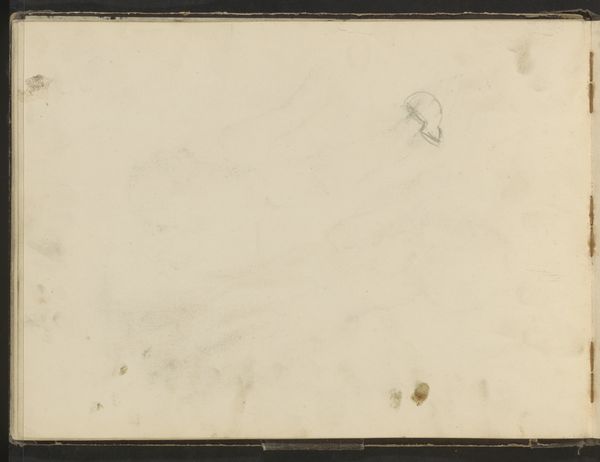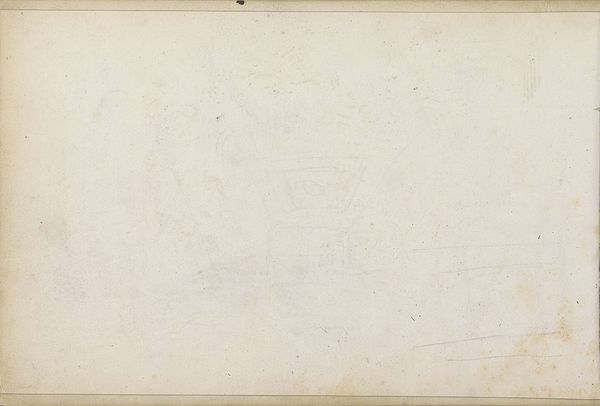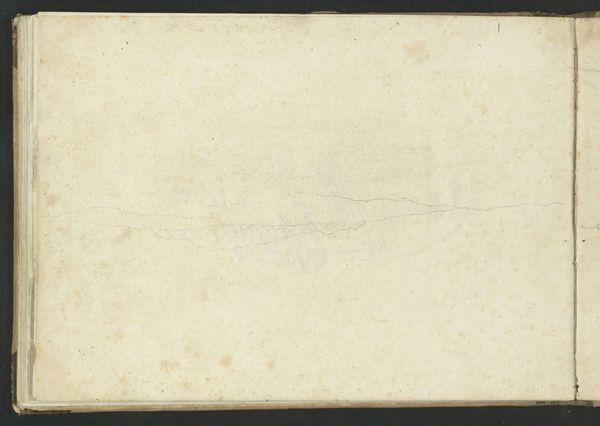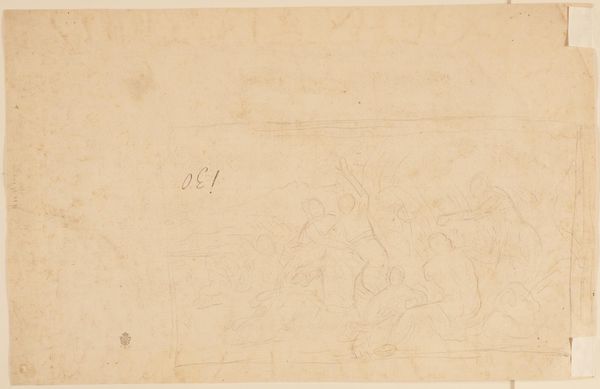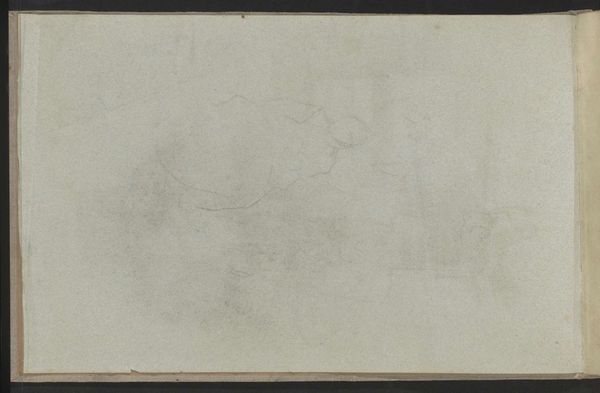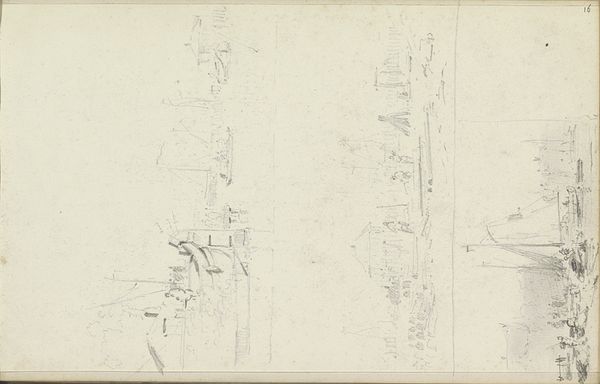
Copyright: Rijks Museum: Open Domain
Editor: Here we have Willem Witsen's "Annotatie" from around 1897 to 1900. It's a drawing, made with ink, pencil, and pastel on paper. What strikes me immediately is how abstract it feels for its time. What do you see in this piece? Curator: I see the residues of labour. The smudges, the faint pencil lines, the ghost of past drawings – all these are evidence of the artist’s hand and process. I'm interested in what labor went into producing this, and also the potential social implications. Editor: Social implications? What do you mean? Curator: Consider the paper itself. Its materiality reveals its production process. Was it mass-produced, hinting at the rise of industrialization and consumerism? Or was it handmade, signifying a more craft-oriented, perhaps even anti-industrial, stance by the artist? It challenges the viewer to look beyond the image. Also, observe the inscription, perhaps instructions or a notation – whose hand is that, and what kind of instruction? All part of a social act. Editor: That’s fascinating. I was so focused on the abstract landscape element I didn't even consider the material reality. Curator: It invites questions about value. What is "finished" art versus a preliminary sketch, and who decides? We place high art in the canon, but drawings and sketches may reflect the artist's true labour and experimentation. Is the value in the final piece, or the whole process of artistic creation? Editor: I never thought of it that way. It's more than just a sketch; it's a record of work. Thank you. Curator: Precisely. Considering the conditions of its making—the materiality of its production, reveals deeper aspects of its meaning and place within its own time.
Comments
No comments
Be the first to comment and join the conversation on the ultimate creative platform.
